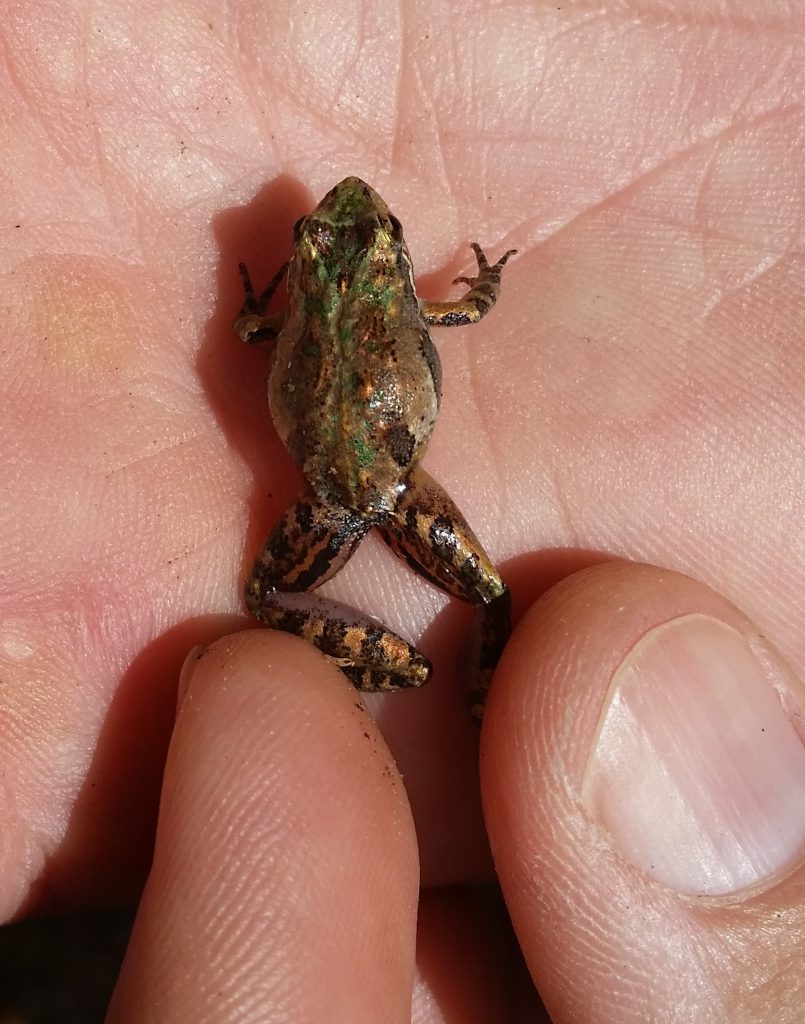WOW… is all I can say, when I step outside at night of late and become immersed in the spectacular chorus of calls from breeding frogs and toads near my Wakulla County residence. The sound reverberates to the level where it sometimes feels like it is echoing inside one’s head. Recent heavy rains have awakened local species to the notion that there is no time like the present for pro-creation; given the fact that many of the shallow, depressional wetlands in our region will only contain water for a short window of time.
This may seem like a drawback to the life style of frogs and toads that depend on these wetlands but nature has a way of surprising us with incredible adaptations for survival. For instance, the eastern spadefoot toad (Scaphiopus holbrookii) can actually survive through several years with no water available for raising their young. They do this by remaining buried in the ground, only emerging after heavy rains that collect in depressions. Tadpoles metamorphose into small toads within 28 days so by the time the pool goes dry they are likely long-gone. Female spadefoots will lay over 2,000 eggs at a time so the number of progeny that can emerge from a small depressional wetland is phenomenal. I recall seeing black stains across roadways all over the County about a month after one of our tropical storms. Baby spadefoot toads were dispersing by the millions from hundreds of shallow pools across the region and local roadways were one of the hazards they faced on their journey.
Another advantage to amphibians breeding in ephemeral (temporary) wetlands has to do with the fact that there are no fish to prey on the tadpoles. This is not a requirement for all species, as some have chemical defenses (bad taste) that limit predation, but others could not successfully breed in permanent bodies of water.
Some of the species I have heard calling lately include squirrel treefrogs, green treefrogs, Cope’s gray treefrogs, southern toads, cricket frogs, and a few others I have not identified yet. If you have never made an effort to identify the night calls of frogs and toads, you don’t know what you are missing in your local environment. Some are quite difficult to separate but many of very distinct and once you put the call with a name you won’t ever forget it. Take a moment to listen to one of my favorites, the southern toad; the origin of a beautiful, high-pitched trill that you most likely have never paid much attention to. This website (The Frog Blog) is a great resource to learn more calls. Be sure to listen also to the southern cricket frog call that sounds like two marbles clacked together, and Copes’ gray treefrog, which many might mistake for a bird as they call from high in the tree canopy.
The cacophony of sounds on a warm summer’s night can seem chaotic and random but if you spend a little time sorting out the musicians, you are sure to develop a deeper appreciation of the symphony, along with a better understanding of the well-orchestrated cycles of nature in your Panhandle backyard.
- Recent Catch of a Bocourt Swimming Crab in Apalachicola Bay - November 22, 2024
- Damselfly Love - October 18, 2024
- Meet the Ocellated Flounder - June 28, 2024

